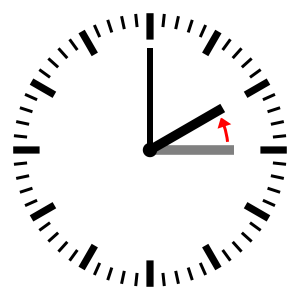 Employing best practices in Task Order Solicitation Management processes can help Government respond to constant challenges throughout the acquisition life cycle, particularly the acquisition planning phase. The primary reason for using a coordinated effort to apply best practices among Government Program Managers, Contracting Officers, program officials, and industry stakeholders is to increase the probability of mutual maximum results. In this blog, I’ll share with you some best practices that I’ve learned and experienced from a Government and industry perspective.
Employing best practices in Task Order Solicitation Management processes can help Government respond to constant challenges throughout the acquisition life cycle, particularly the acquisition planning phase. The primary reason for using a coordinated effort to apply best practices among Government Program Managers, Contracting Officers, program officials, and industry stakeholders is to increase the probability of mutual maximum results. In this blog, I’ll share with you some best practices that I’ve learned and experienced from a Government and industry perspective.
Let’s start with task order solicitation best practices for government. They include but are not limited to the following:
- Directing market research to establish a baseline in organizing technical, functional, and business domains mapped to government requirements/gaps. Once a baseline has been established, the technical, functional, and business domains serve as a framework for driving the creation of the SOO/SOW with clarity and precision.
- Next, specified consistent roles within each of the domains identified in your baseline are captured and defined, culminating with a packaged release of your RFP.
- Underpinning this entire best practice is frequent and even collaborative interactivity and development with industry throughout the process.
Again, working with your market research industry partners, and a clearly identified and precisely written baseline requirements document, shortens the release time and produces a focused and accurate product, lessening the risk of costly rework, and even mission degradation.
The objective of Task Order Solicitation for contractors is to identify the best opportunity fit for their company, followed by capturing the task order award, and then successfully delivering task order accomplishment. Usually, this accomplishment is closely related to and supports Government mission accomplishment. You could think of it as a synergetic relationship. By employing best practices early in the acquisition life cycle, both Government and industry can prime the pump for successful performance through the task order life cycle.
Qualified Task Order Manager Key
Leveraging industry-leading practice and technical standards from organizations such as the Project Management Institute (PMI), Defense Acquisition University (DAU), National Contract Management Association (NCMA), and International Cost Estimating and Analysis Association (ICEAA), and ITIL, etc., in concert with a suite of program control tools ensures optimized scheduling, organizational resource allocation, cost management and reporting. In particular, from both perspectives, I’ve found that having a qualified, competent Task Order Manager who clearly defines requirements/goals/roles, scales and accurately applies resources, and closely aligns solutions with the mission and existing environment, is the primary key to contract and mission success.
Based on my experience with task order management from both perspectives, here is a base checklist for your reference, and what trade-offs may be possible among these variables.
- Be transparent in the on-boarding and transition process
- Staff assignments; Key personnel (Education, Experience, Skills -required/desired)
- RACI Key Delegation Roles Matrix, mapping SOW Deliverables/Requirements to staff assignments
- Subcontractor tasking and communication
- Define workflow processes that lend themselves to being standardized, repeatable activities such as:
- Training
- Travel
- Personnel and substitutions
- Reach-Back and knowledge management
- GFE acquisition, management, and disposition
- Inspection and acceptance or rejection of deliverables
- Take a holistic approach to task management and scheduling
- Review of Integrated Master Schedule identifying dependencies or interrelationships between your scope of work, other program efforts, and significant dates
- Status Checks assessing progress
- Streamline open communication and rapid response between government, its industry partners, and between prime contractors and their subcontractors
- Correspondence with the contractor
- Monthly Status Reporting/Invoices/Modifications
- Notifications to the Contracting Officer
- Managing risks, issues, and problems
- Correspondence with the contractor
Government and Contractor effective task order management originates with the implementation of best practices from the outset and throughout the task order solicitation phase. From market research, to requirements development, collaboration between government and industry shape and detail advantages that result in an RFP, contract award, and ultimately task order response that meets or exceeds mission goals. Early thought given to task order management will set both parties up for success.



